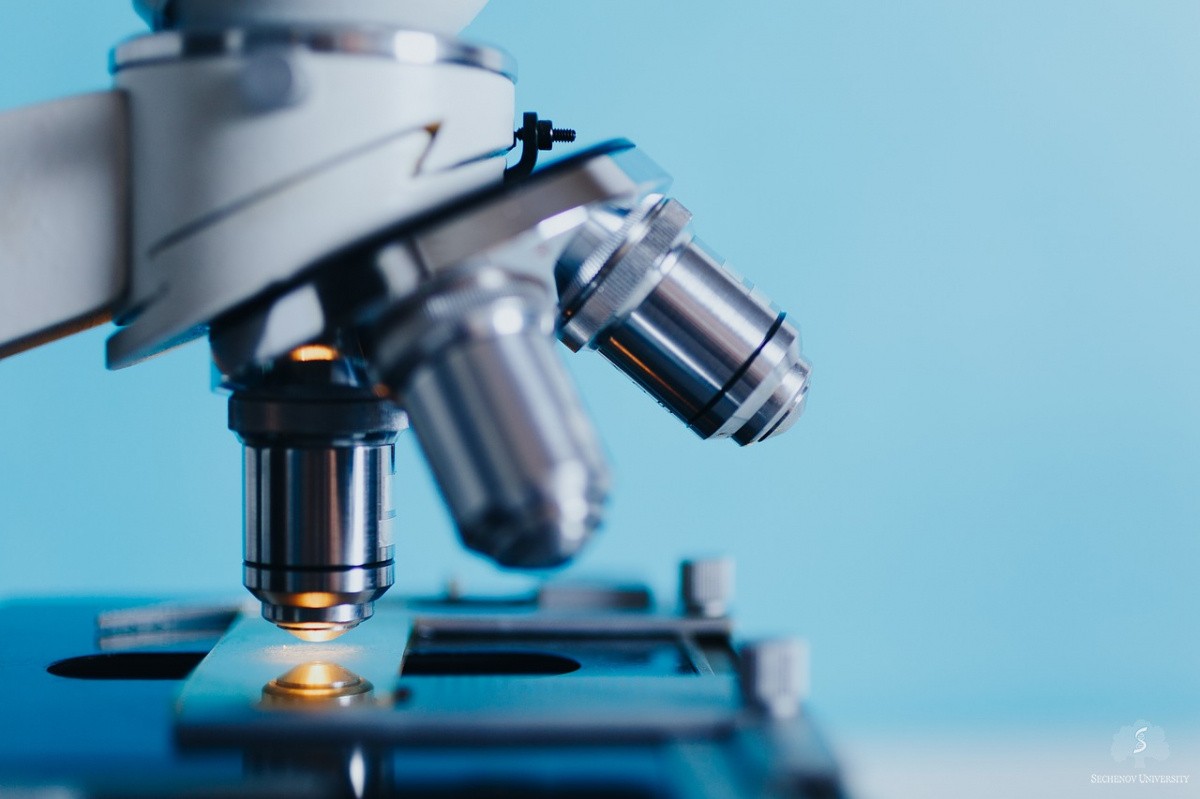-
About University
- Mission & Brand Strategy
- University Leadership
- Rector's Welcome
- History
- Regulatory Documents
- Contacts
- Staff
- International Recruitment
- Partners
Applicants- Why Sechenov University
- Degree Programmes in English
- Preparatory Courses
- Non-Degree Programmes
- Transfer from other Institutions
10.07.2020Sechenov scientists study a novel type of extracellular vesicles
 The discovery can be used in surgical meshes, topical powders, and injectable hydrogels.
The discovery can be used in surgical meshes, topical powders, and injectable hydrogels.
A group of scientists from Sechenov University and the University of Pittsburgh (USA) have published a research paper that unveils the properties of a novel class of extracellular vesicles (EVs). This new, recently discovered EV type is called matrix-bound nanovesicles (MBVs). The analysis was based on electron microscopy, RNA sequencing, and mass spectrometry. The results are published in Science Advances.
In many situations, cells secrete certain substances outside — into the extracellular space. It is necessary for holding together the groups of cells and tissues and sending signals to other cells. For example, hormones and neurotransmitters are molecules that “travel” in the extracellular space. Sometimes the cells secrete particles, or extracellular vesicles (EVs) — complex structures with a number of molecules inside, including proteins, lipids, enzymes, and microRNAs, encapsulated in a membrane. What extracellular vesicles do and why they are important is not fully understood today, especially because there is a great variety of such particles.
The extracellular matrix (ECM) fills the space between the cells within tissues and is composed of the substances secreted by the cells. Usually the ECM contains collagen, a glue-like protein that supports the three-dimensional arrangement of the cells. Tissue engineering, a prominent tool in medicine, uses materials derived from the ECM, thus benefiting from its unique features.
Matrix-bound nanovesicles (MBVs) were discovered several years ago. They are EVs that are attached to the ECM fibres. The composition and membrane structure of MBVs have not been studied until now. The authors of the study compared the structure and properties of liquid-phase EVs and MBVs. The researchers used cell cultures, i.e. laboratory-cultivated cells, for the experiments, in order to eliminate potential issues because of different cell origins. Both liquid-phase EVs and MBVs were found to have a similar size of approximately 200 nanometres, but the particles contained different proteins, lipids, and microRNAs. For example, MBVs carried a much greater share of cardiolipin than EVs. This molecule is usually found in mitochondrial membranes — and it might indicate that mitochondria (cellular “powerhouses”) and MBVs have a common origin. At the same time, liquid-phase EVs contained an elevated level of lipoxin, a substance which inhibits inflammation and stimulates tissue regeneration.
As a conclusion, the study suggests that the fate of the vesicle — whether it will go into the liquid outer medium or remain attached to the matrix — is pre-determined at its production stage. MBVs are embedded in a dense fibre network and are most likely released during tissue generation or matrix repair.
Matrix-bound nanovesicles carry a consistent set of lipids and microRNAs, which can be used in certain diagnostic techniques. The therapeutic application of MBVs also looks very promising, since the particles and the matrix can be transformed into novel biomaterials.
Read more: George S. Hussey et al, Lipidomics and RNA sequencing reveal a novel subpopulation of nanovesicle within extracellular matrix biomaterials, Science Advances (2020).
Photo Credit: Pixabay 2030266Embed on website
Sechenov scientists study a novel type of extracellular vesicles
The discovery can be used in surgical meshes, topical powders, and injectable hydrogels.
A group of scientists from Sechenov University and the University of Pittsburgh (USA) have published a research paper that unveils the properties of a novel class of extracellular vesicles (EVs). This new, recently discovered EV type is called matrix-bound nanovesicles (MBVs). The analysis was based on electron microscopy, RNA sequencing, and mass spectrometry. The results are published in Science Advances.
In many situations, cells secrete certain substances outside — into the extracellular space. It is necessary for holding together the groups of cells and tissues and sending signals to other cells. For example, hormones and neurotransmitters are molecules that “travel” in the extracellular space. Sometimes the cells secrete particles, or extracellular vesicles (EVs) — complex structures with a number of molecules inside, including proteins, lipids, enzymes, and microRNAs, encapsulated in a membrane. What extracellular vesicles do and why they are important is not fully understood today, especially because there is a great variety of such particles.
The extracellular matrix (ECM) fills the space between the cells within tissues and is composed of the substances secreted by the cells. Usually the ECM contains collagen, a glue-like protein that supports the three-dimensional arrangement of the cells. Tissue engineering, a prominent tool in medicine, uses materials derived from the ECM, thus benefiting from its unique features.
Matrix-bound nanovesicles (MBVs) were discovered several years ago. They are EVs that are attached to the ECM fibres. The composition and membrane structure of MBVs have not been studied until now. The authors of the study compared the structure and properties of liquid-phase EVs and MBVs. The researchers used cell cultures, i.e. laboratory-cultivated cells, for the experiments, in order to eliminate potential issues because of different cell origins. Both liquid-phase EVs and MBVs were found to have a similar size of approximately 200 nanometres, but the particles contained different proteins, lipids, and microRNAs. For example, MBVs carried a much greater share of cardiolipin than EVs. This molecule is usually found in mitochondrial membranes — and it might indicate that mitochondria (cellular “powerhouses”) and MBVs have a common origin. At the same time, liquid-phase EVs contained an elevated level of lipoxin, a substance which inhibits inflammation and stimulates tissue regeneration.
As a conclusion, the study suggests that the fate of the vesicle — whether it will go into the liquid outer medium or remain attached to the matrix — is pre-determined at its production stage. MBVs are embedded in a dense fibre network and are most likely released during tissue generation or matrix repair.
Matrix-bound nanovesicles carry a consistent set of lipids and microRNAs, which can be used in certain diagnostic techniques. The therapeutic application of MBVs also looks very promising, since the particles and the matrix can be transformed into novel biomaterials.
Read more: George S. Hussey et al, Lipidomics and RNA sequencing reveal a novel subpopulation of nanovesicle within extracellular matrix biomaterials, Science Advances (2020).
Photo Credit: Pixabay 2030266



